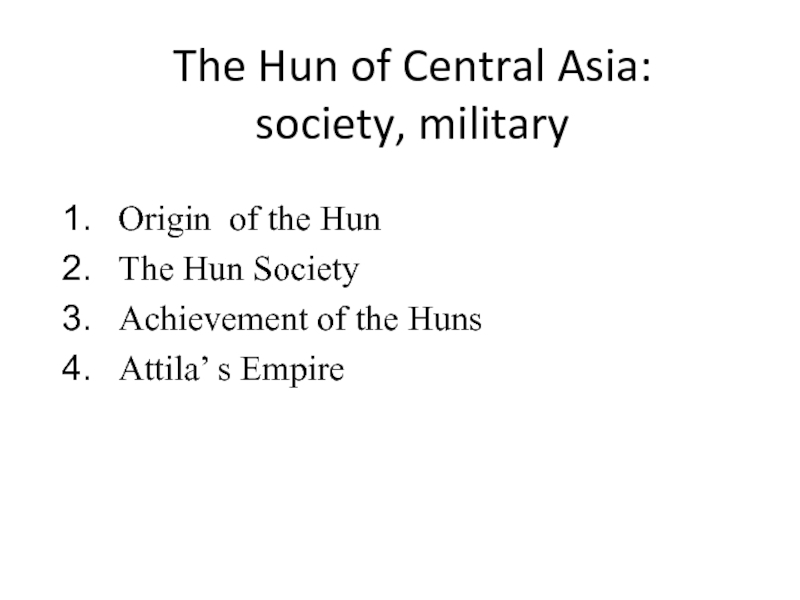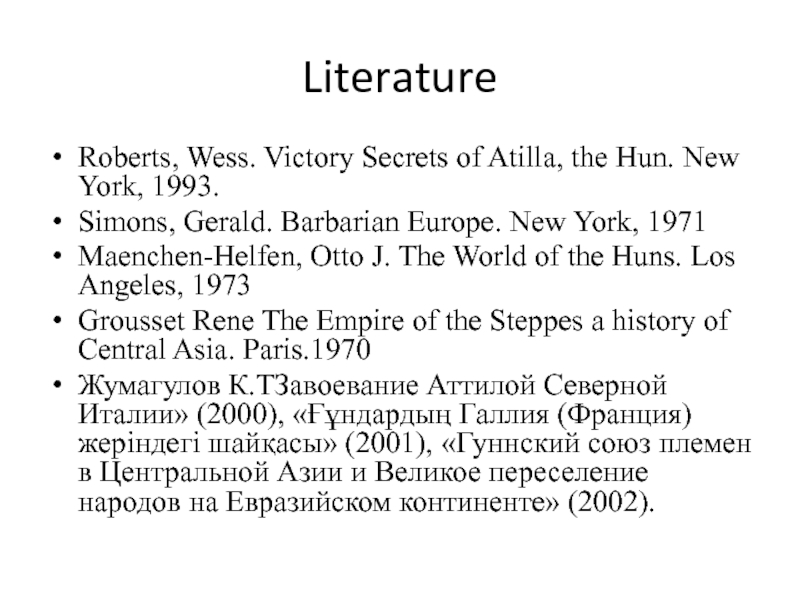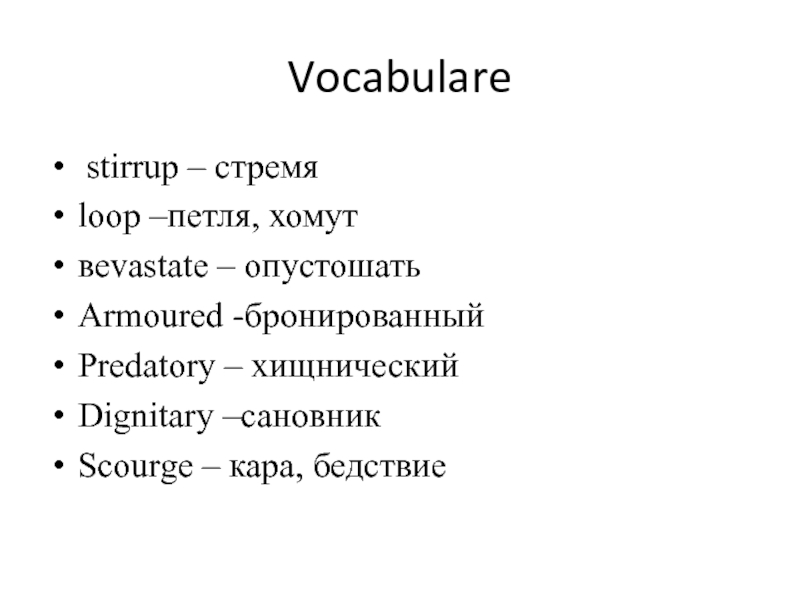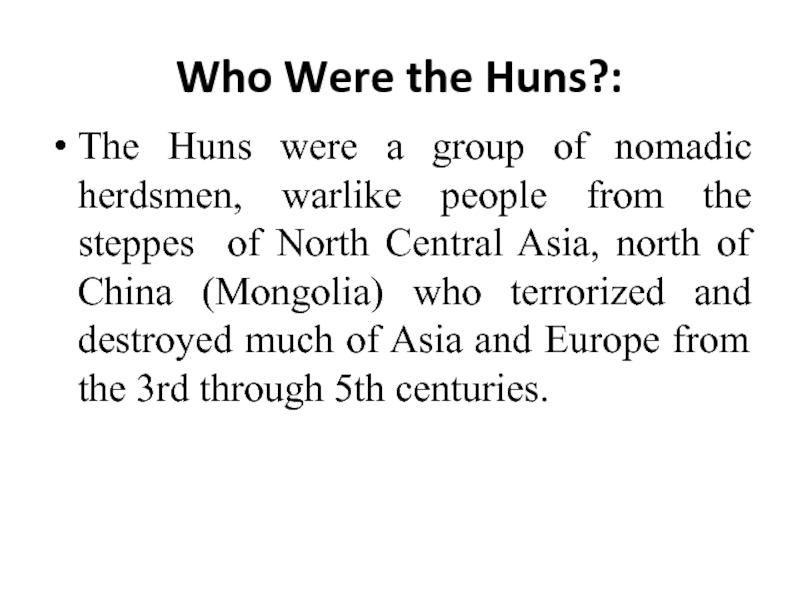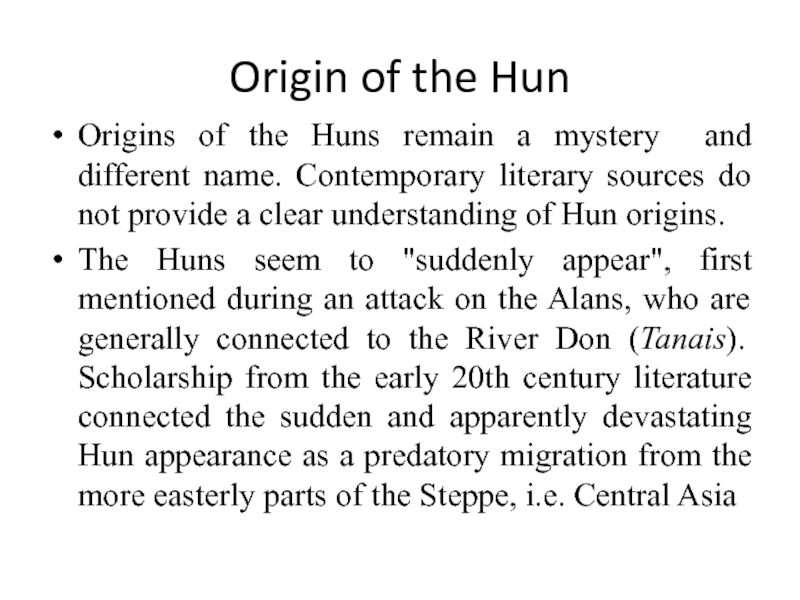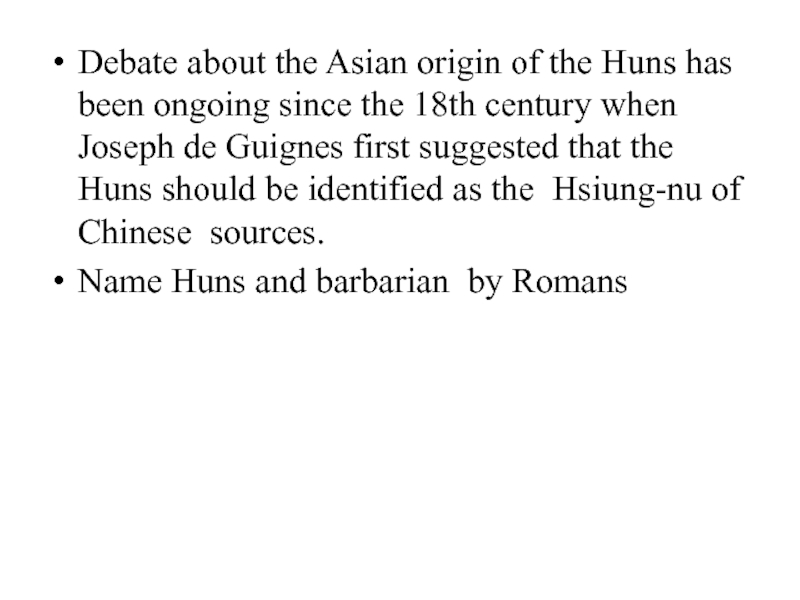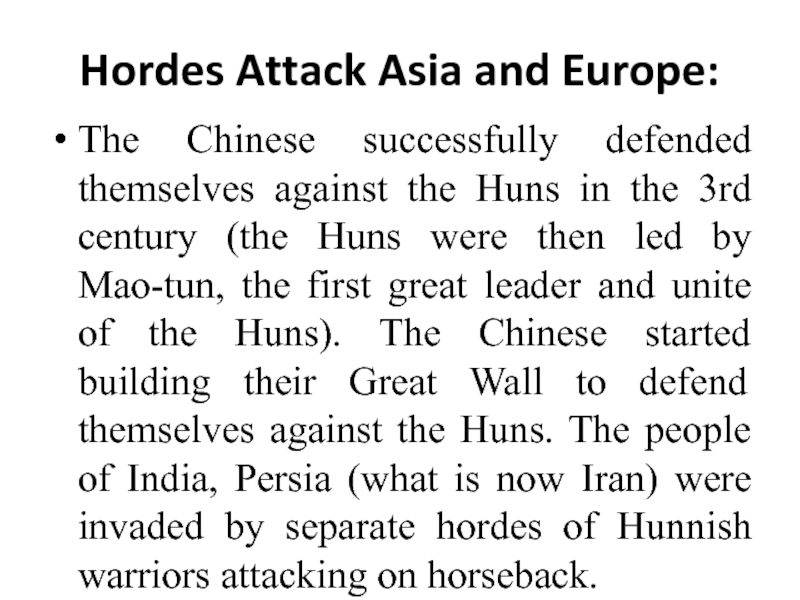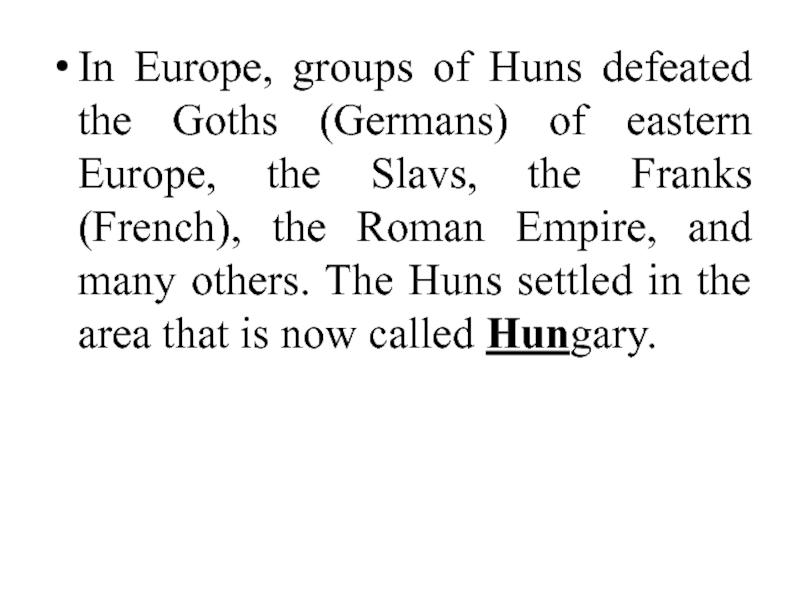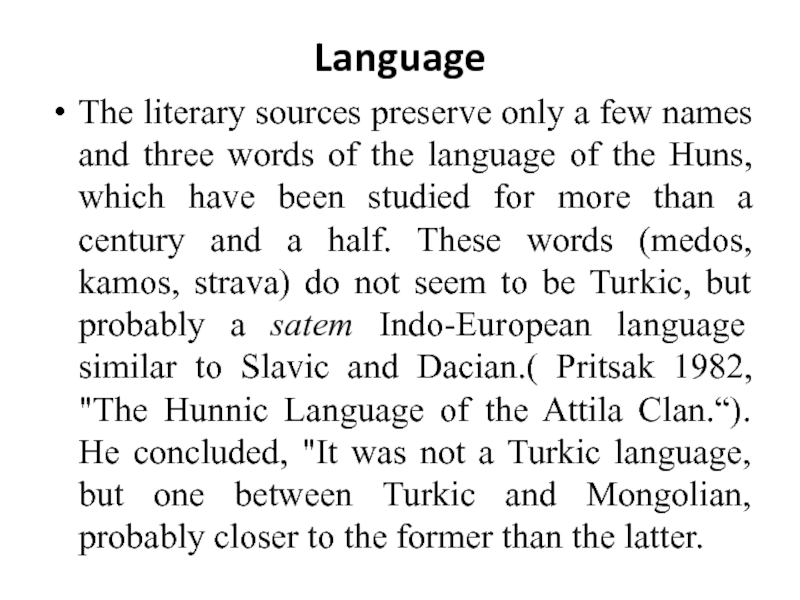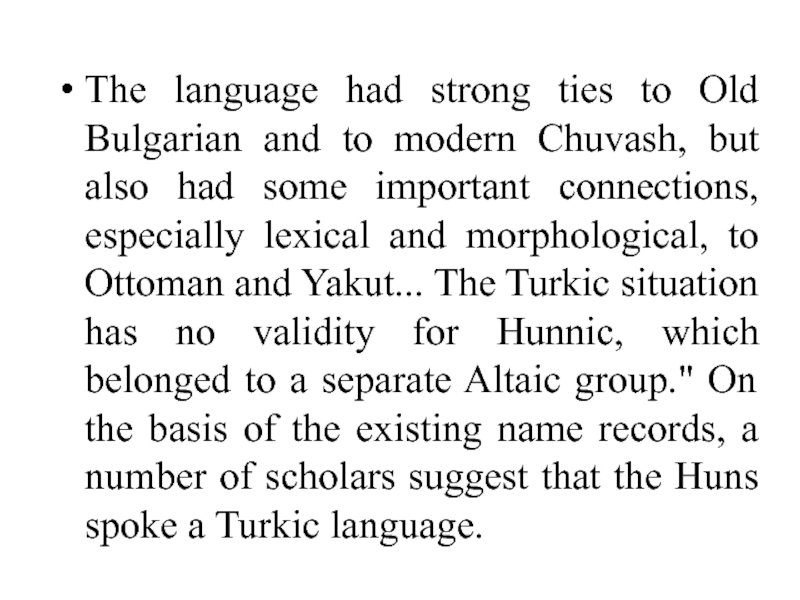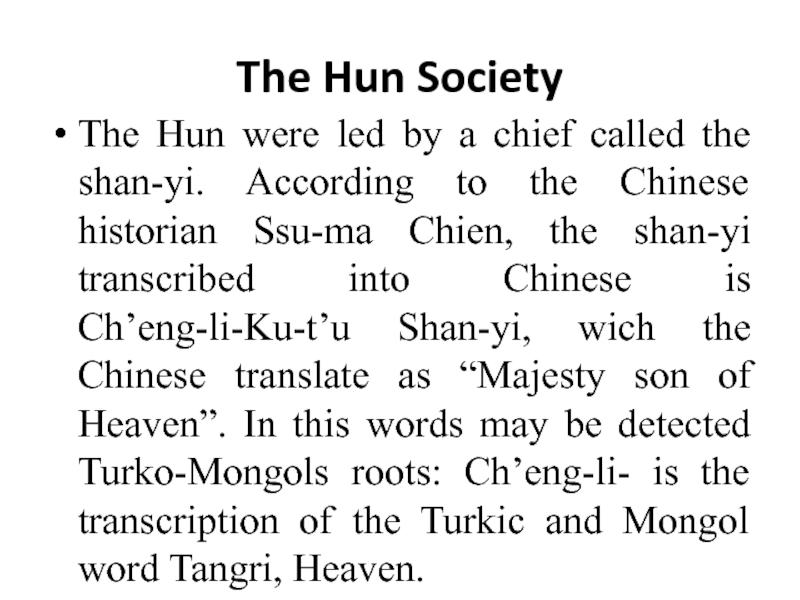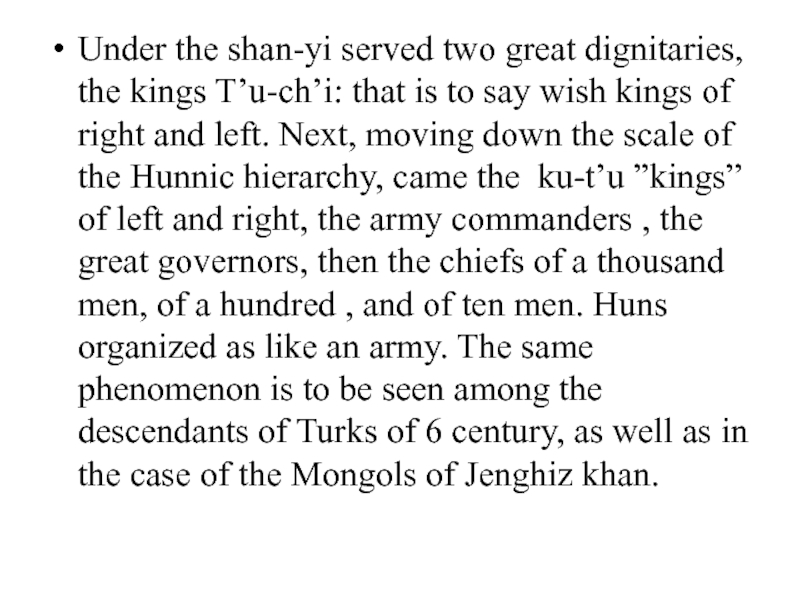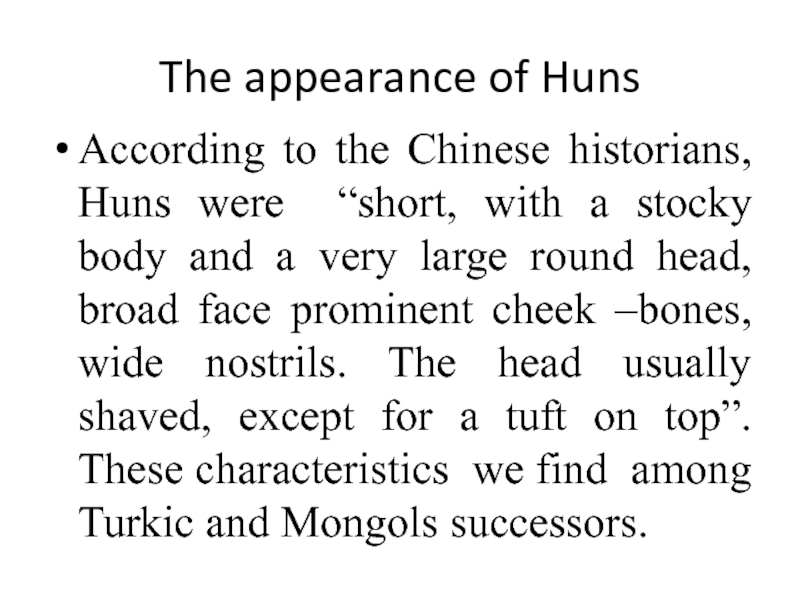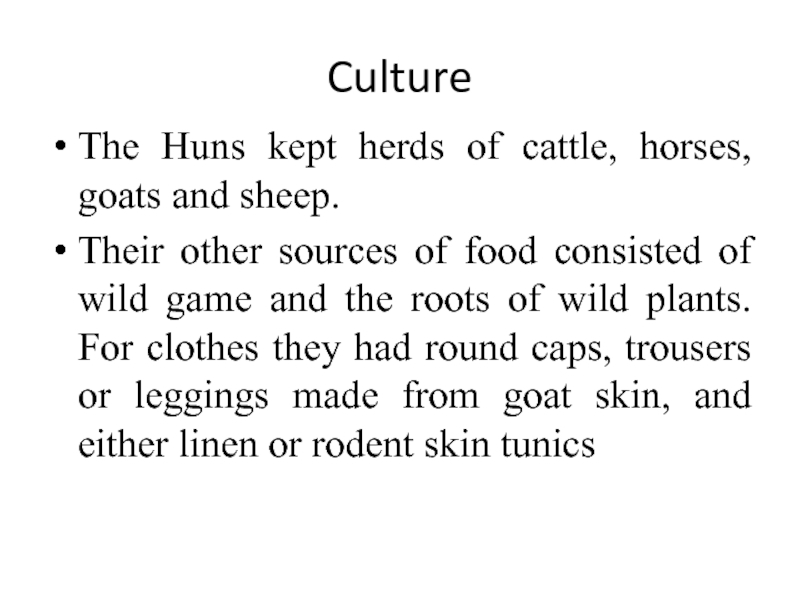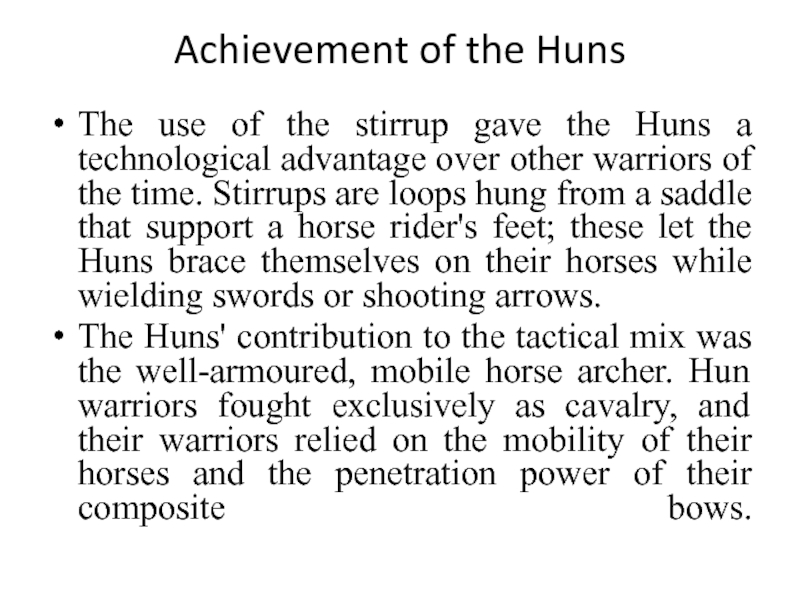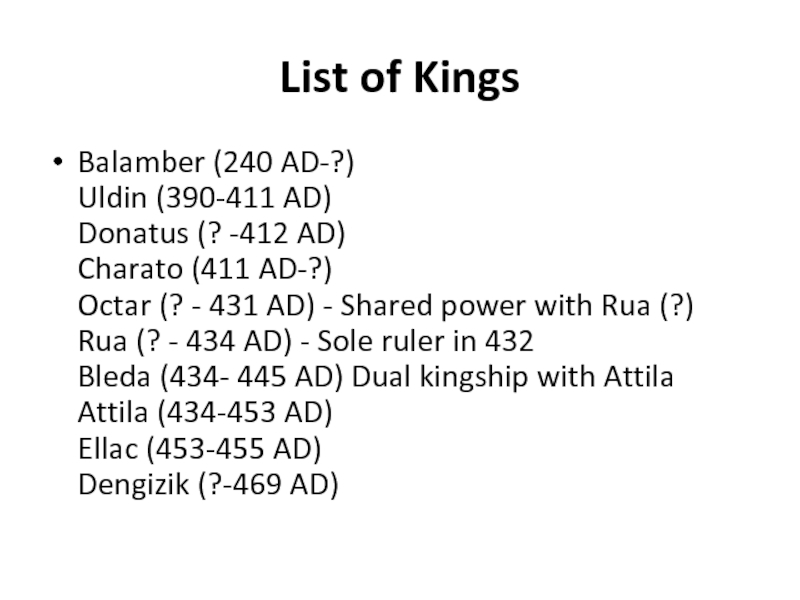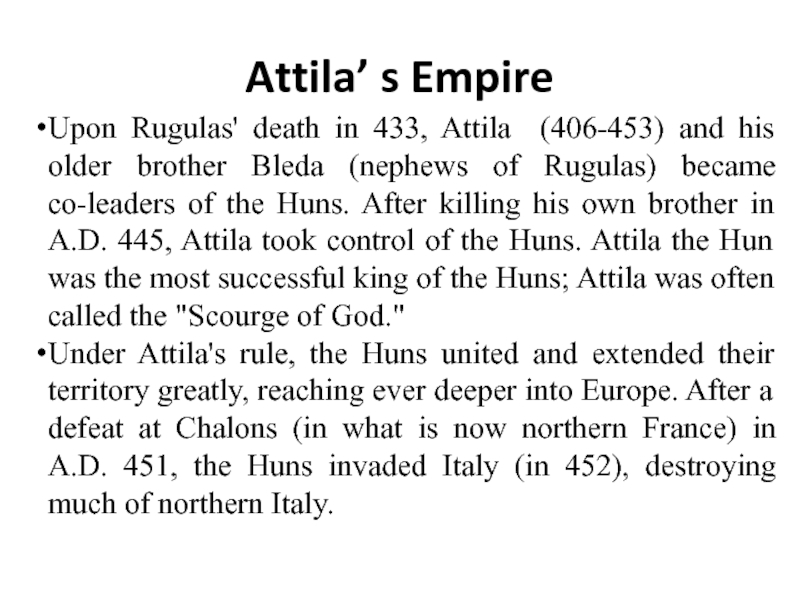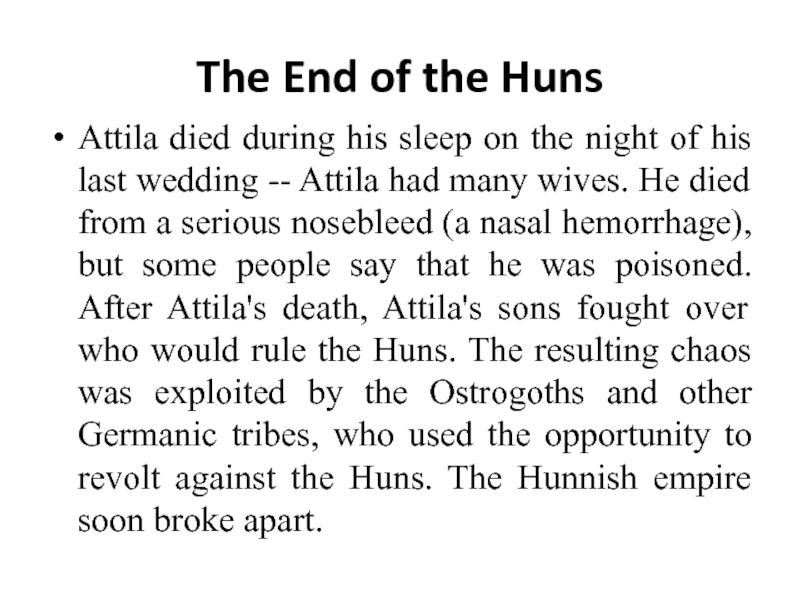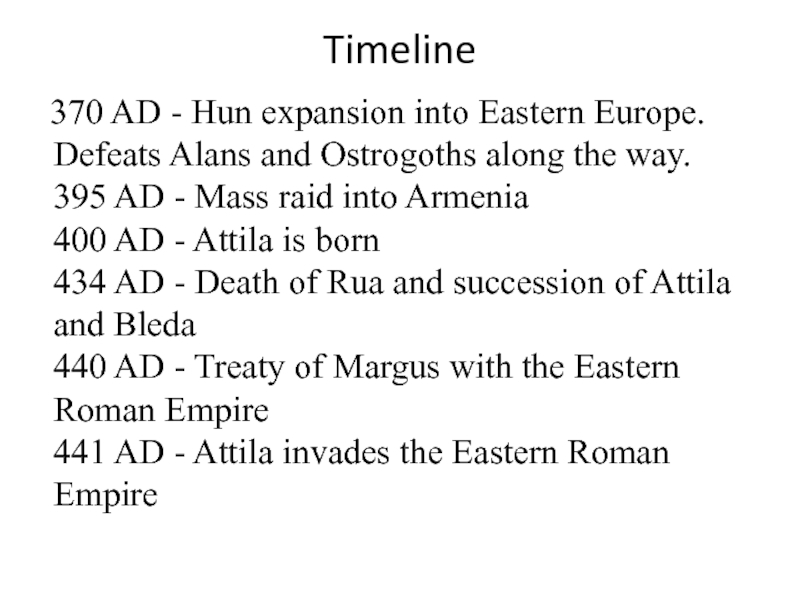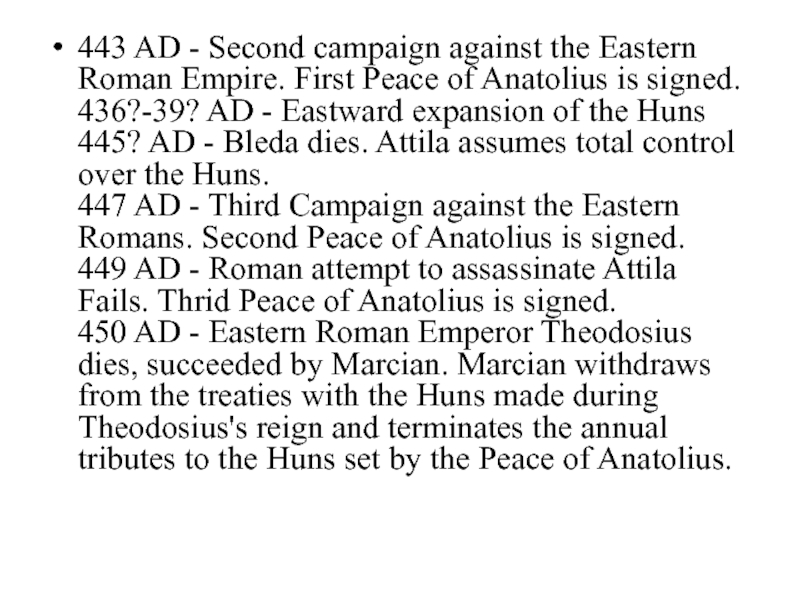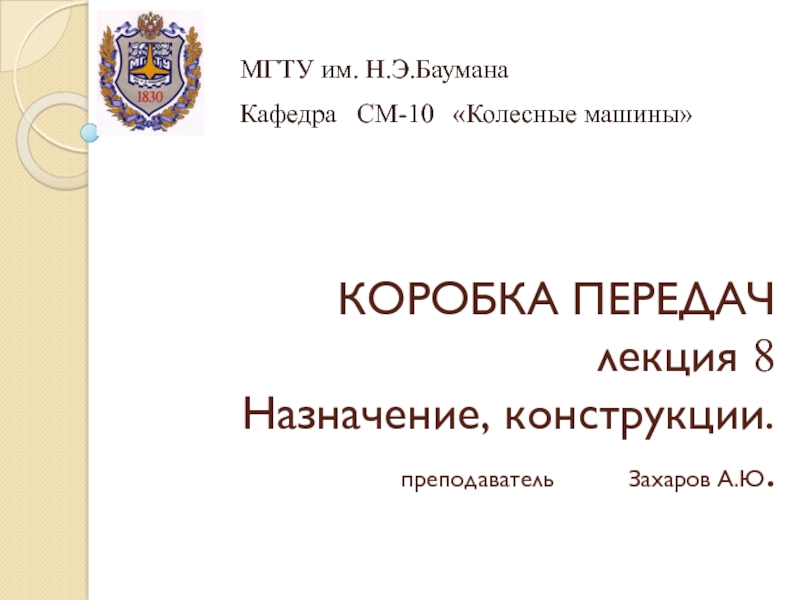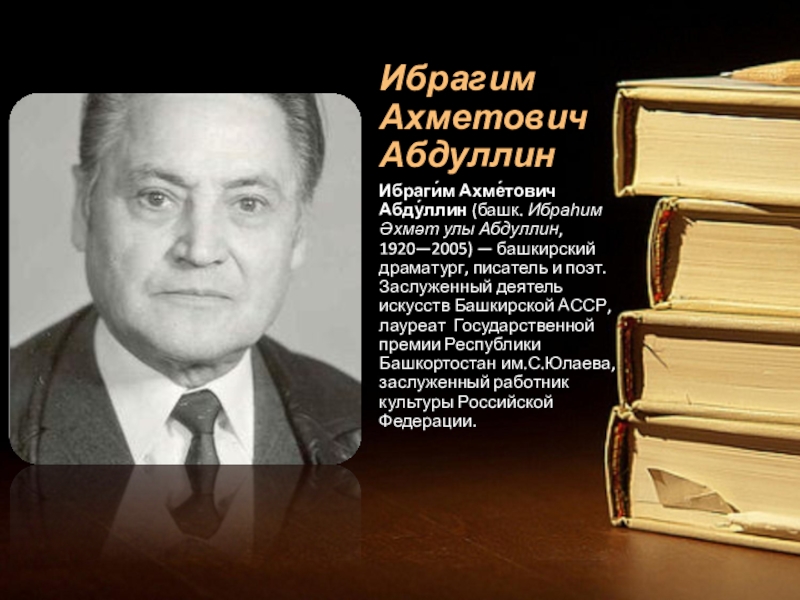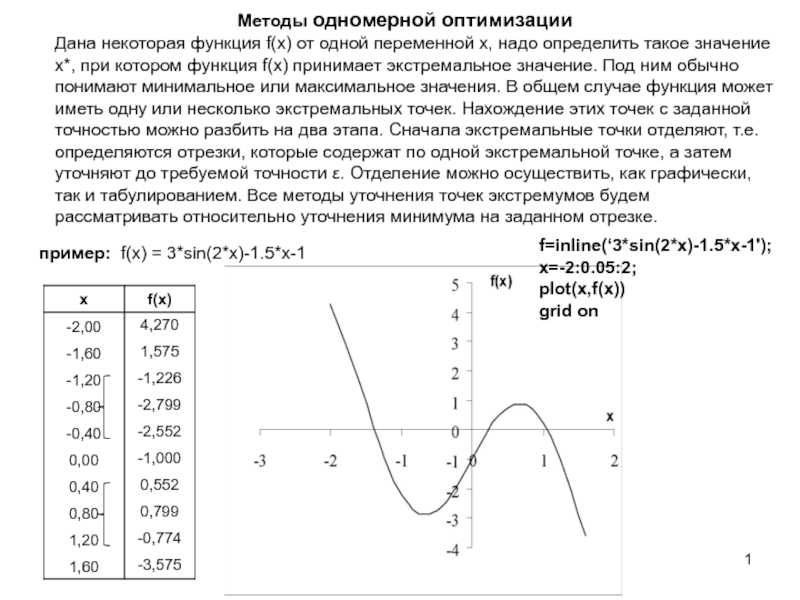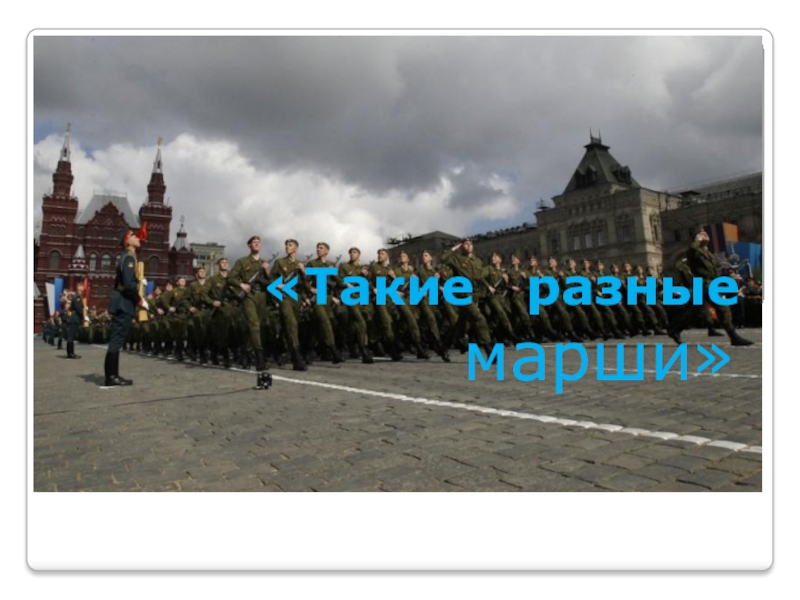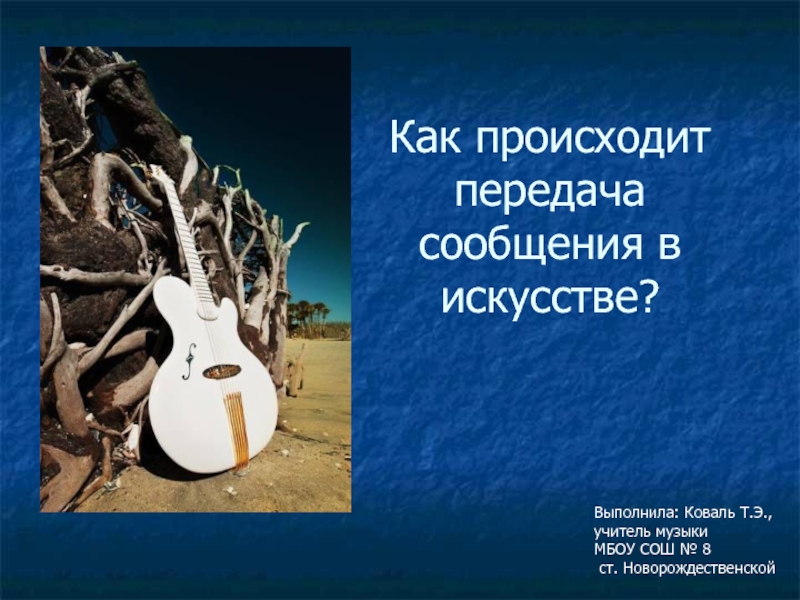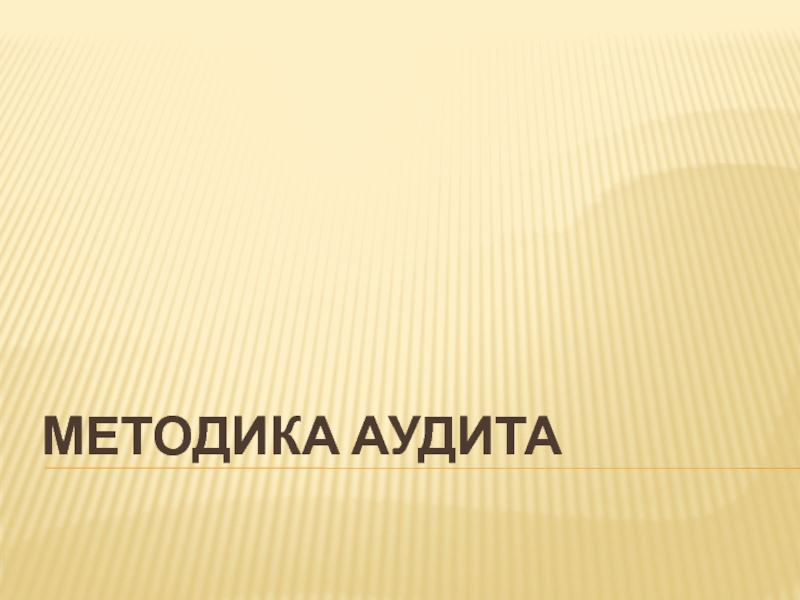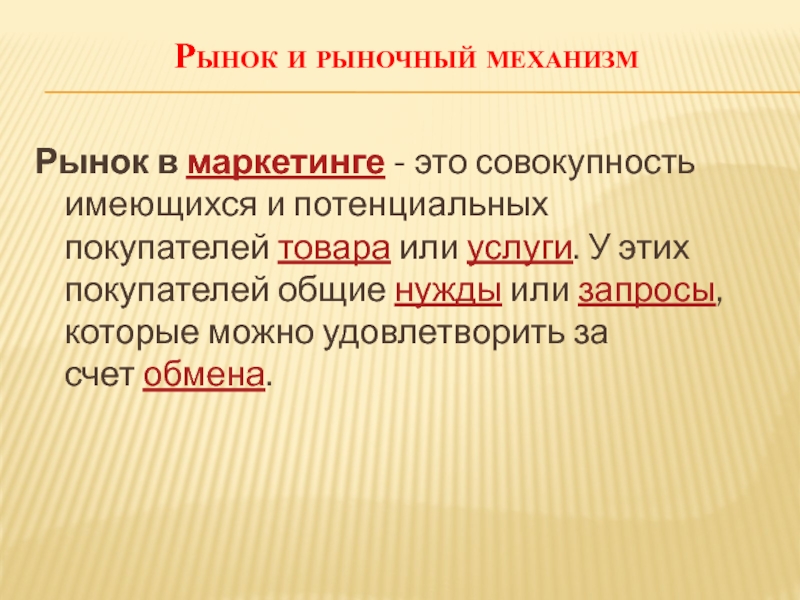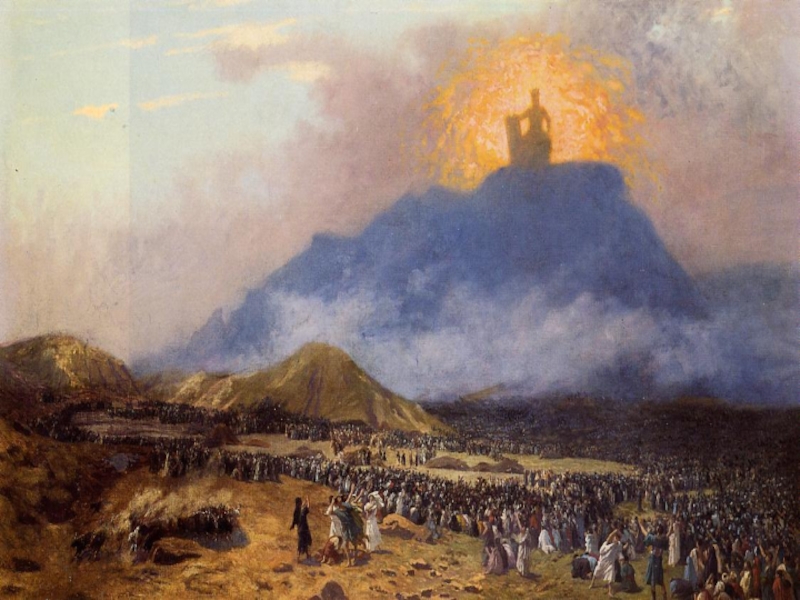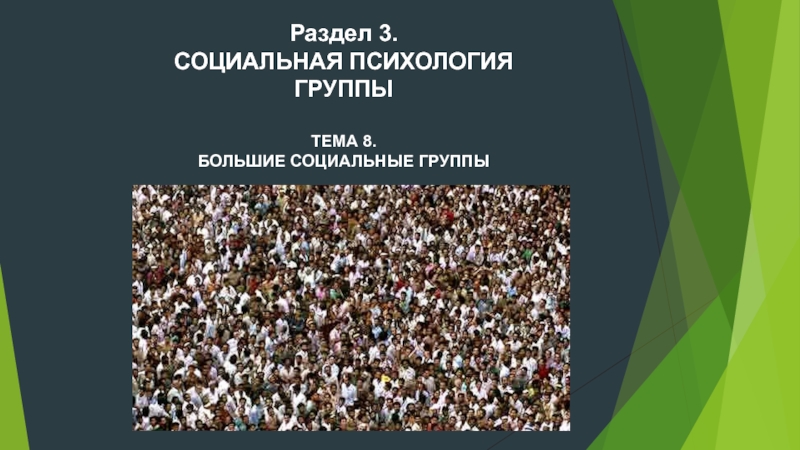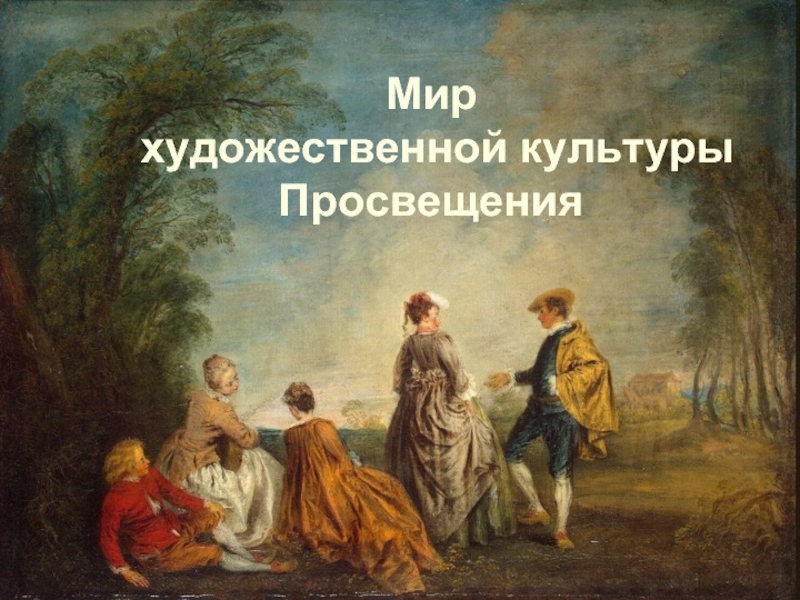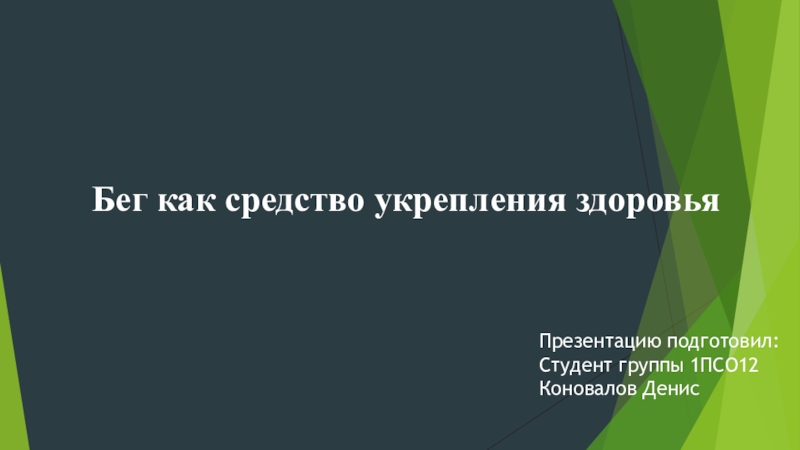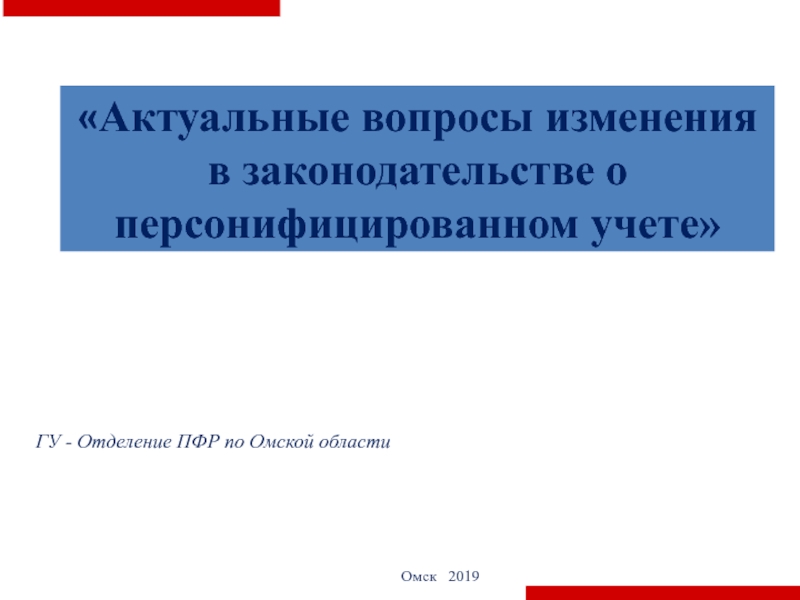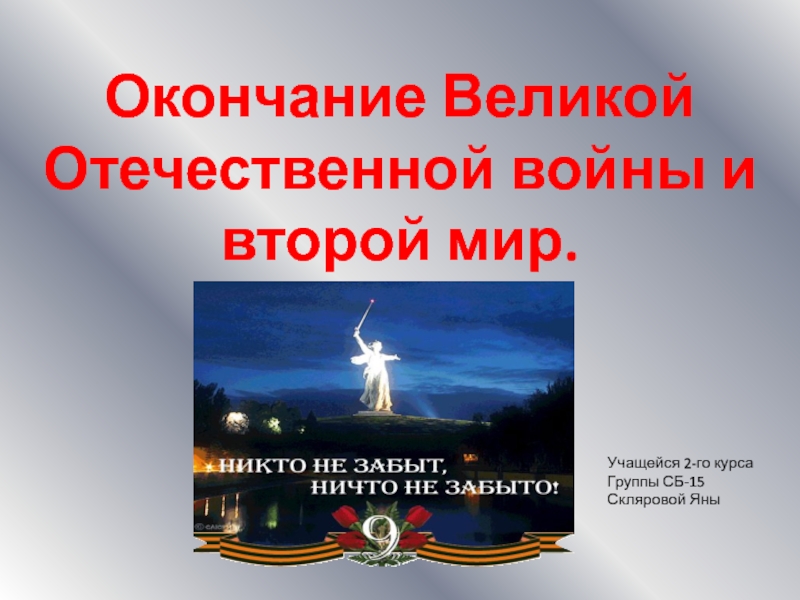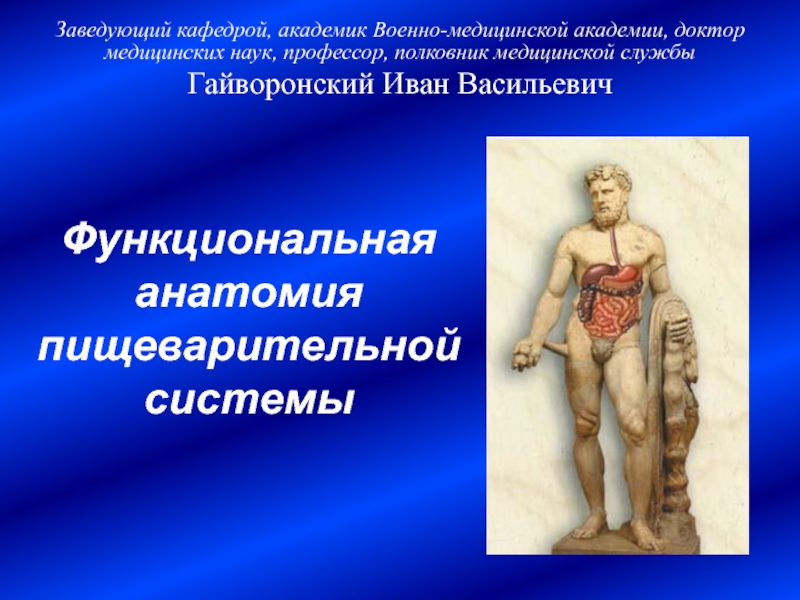Разделы презентаций
- Разное
- Английский язык
- Астрономия
- Алгебра
- Биология
- География
- Геометрия
- Детские презентации
- Информатика
- История
- Литература
- Математика
- Медицина
- Менеджмент
- Музыка
- МХК
- Немецкий язык
- ОБЖ
- Обществознание
- Окружающий мир
- Педагогика
- Русский язык
- Технология
- Физика
- Философия
- Химия
- Шаблоны, картинки для презентаций
- Экология
- Экономика
- Юриспруденция
The Hun of Central Asia: society, military
Содержание
- 1. The Hun of Central Asia: society, military
- 2. LiteratureRoberts, Wess. Victory Secrets of Atilla, the
- 3. Vocabulare stirrup – стремяloop –петля, хомутвevastatе – опустошатьArmoured -бронированныйPredatory – хищническийDignitary –сановникScourge – кара, бедствие
- 4. Who Were the Huns?:The Huns were a
- 5. Origin of the HunOrigins of the Huns
- 6. Debate about the Asian origin of the
- 7. Hordes Attack Asia and Europe:The Chinese successfully
- 8. In Europe, groups of Huns defeated the
- 9. LanguageThe literary sources preserve only a few
- 10. The language had strong ties to Old
- 11. The Hun SocietyThe Hun were led by
- 12. Under the shan-yi served two great dignitaries,
- 13. The appearance of HunsAccording to the Chinese
- 14. CultureThe Huns kept herds of cattle, horses,
- 15. Achievement of the Huns The use of
- 16. List of KingsBalamber (240 AD-?) Uldin
- 17. Attila’ s EmpireUpon Rugulas' death in 433,
- 18. The End of the HunsAttila died during
- 19. Timeline 370 AD - Hun
- 20. 443 AD - Second campaign against the
- 21. Скачать презентанцию
LiteratureRoberts, Wess. Victory Secrets of Atilla, the Hun. New York, 1993.Simons, Gerald. Barbarian Europe. New York, 1971Maenchen-Helfen, Otto J. The World of the Huns. Los Angeles, 1973Grousset Rene The Empire of
Слайды и текст этой презентации
Слайд 2Literature
Roberts, Wess. Victory Secrets of Atilla, the Hun. New York,
1993.
Simons, Gerald. Barbarian Europe. New York, 1971
Maenchen-Helfen, Otto J. The
World of the Huns. Los Angeles, 1973Grousset Rene The Empire of the Steppes a history of Central Asia. Paris.1970
Жумагулов К.ТЗавоевание Аттилой Северной Италии» (2000), «Ғұндардың Галлия (Франция) жеріндегі шайқасы» (2001), «Гуннский союз племен в Центральной Азии и Великое переселение народов на Евразийском континенте» (2002).
Слайд 3Vocabulare
stirrup – стремя
loop –петля, хомут
вevastatе – опустошать
Armoured -бронированный
Predatory –
хищнический
Dignitary –сановник
Scourge – кара, бедствие
Слайд 4Who Were the Huns?:
The Huns were a group of nomadic
herdsmen, warlike people from the steppes of North Central Asia,
north of China (Mongolia) who terrorized and destroyed much of Asia and Europe from the 3rd through 5th centuries.Слайд 5Origin of the Hun
Origins of the Huns remain a mystery
and different name. Contemporary literary sources do not provide a
clear understanding of Hun origins.The Huns seem to "suddenly appear", first mentioned during an attack on the Alans, who are generally connected to the River Don (Tanais). Scholarship from the early 20th century literature connected the sudden and apparently devastating Hun appearance as a predatory migration from the more easterly parts of the Steppe, i.e. Central Asia
Слайд 6Debate about the Asian origin of the Huns has been
ongoing since the 18th century when Joseph de Guignes first
suggested that the Huns should be identified as the Hsiung-nu of Chinese sources.Name Huns and barbarian by Romans
Слайд 7Hordes Attack Asia and Europe:
The Chinese successfully defended themselves against
the Huns in the 3rd century (the Huns were then
led by Mao-tun, the first great leader and unite of the Huns). The Chinese started building their Great Wall to defend themselves against the Huns. The people of India, Persia (what is now Iran) were invaded by separate hordes of Hunnish warriors attacking on horseback.Слайд 8In Europe, groups of Huns defeated the Goths (Germans) of
eastern Europe, the Slavs, the Franks (French), the Roman Empire,
and many others. The Huns settled in the area that is now called Hungary.Слайд 9Language
The literary sources preserve only a few names and three
words of the language of the Huns, which have been
studied for more than a century and a half. These words (medos, kamos, strava) do not seem to be Turkic, but probably a satem Indo-European language similar to Slavic and Dacian.( Pritsak 1982, "The Hunnic Language of the Attila Clan.“). He concluded, "It was not a Turkic language, but one between Turkic and Mongolian, probably closer to the former than the latter.Слайд 10The language had strong ties to Old Bulgarian and to
modern Chuvash, but also had some important connections, especially lexical
and morphological, to Ottoman and Yakut... The Turkic situation has no validity for Hunnic, which belonged to a separate Altaic group." On the basis of the existing name records, a number of scholars suggest that the Huns spoke a Turkic language.Слайд 11The Hun Society
The Hun were led by a chief called
the shan-yi. According to the Chinese historian Ssu-ma Chien, the
shan-yi transcribed into Chinese is Ch’eng-li-Ku-t’u Shan-yi, wich the Chinese translate as “Majesty son of Heaven”. In this words may be detected Turko-Mongols roots: Ch’eng-li- is the transcription of the Turkic and Mongol word Tangri, Heaven.Слайд 12Under the shan-yi served two great dignitaries, the kings T’u-ch’i:
that is to say wish kings of right and left.
Next, moving down the scale of the Hunnic hierarchy, came the ku-t’u ”kings” of left and right, the army commanders , the great governors, then the chiefs of a thousand men, of a hundred , and of ten men. Huns organized as like an army. The same phenomenon is to be seen among the descendants of Turks of 6 century, as well as in the case of the Mongols of Jenghiz khan.Слайд 13The appearance of Huns
According to the Chinese historians, Huns were
“short, with a stocky body and a very large round
head, broad face prominent cheek –bones, wide nostrils. The head usually shaved, except for a tuft on top”. These characteristics we find among Turkic and Mongols successors.Слайд 14Culture
The Huns kept herds of cattle, horses, goats and sheep.
Their
other sources of food consisted of wild game and the
roots of wild plants. For clothes they had round caps, trousers or leggings made from goat skin, and either linen or rodent skin tunicsСлайд 15Achievement of the Huns
The use of the stirrup gave the
Huns a technological advantage over other warriors of the time.
Stirrups are loops hung from a saddle that support a horse rider's feet; these let the Huns brace themselves on their horses while wielding swords or shooting arrows.The Huns' contribution to the tactical mix was the well-armoured, mobile horse archer. Hun warriors fought exclusively as cavalry, and their warriors relied on the mobility of their horses and the penetration power of their composite bows.
Слайд 16List of Kings
Balamber (240 AD-?)
Uldin (390-411 AD)
Donatus (?
-412 AD) Charato (411 AD-?) Octar (? - 431 AD) -
Shared power with Rua (?) Rua (? - 434 AD) - Sole ruler in 432 Bleda (434- 445 AD) Dual kingship with Attila Attila (434-453 AD) Ellac (453-455 AD) Dengizik (?-469 AD)Слайд 17Attila’ s Empire
Upon Rugulas' death in 433, Attila (406-453) and
his older brother Bleda (nephews of Rugulas) became co-leaders of
the Huns. After killing his own brother in A.D. 445, Attila took control of the Huns. Attila the Hun was the most successful king of the Huns; Attila was often called the "Scourge of God."Under Attila's rule, the Huns united and extended their territory greatly, reaching ever deeper into Europe. After a defeat at Chalons (in what is now northern France) in A.D. 451, the Huns invaded Italy (in 452), destroying much of northern Italy.
